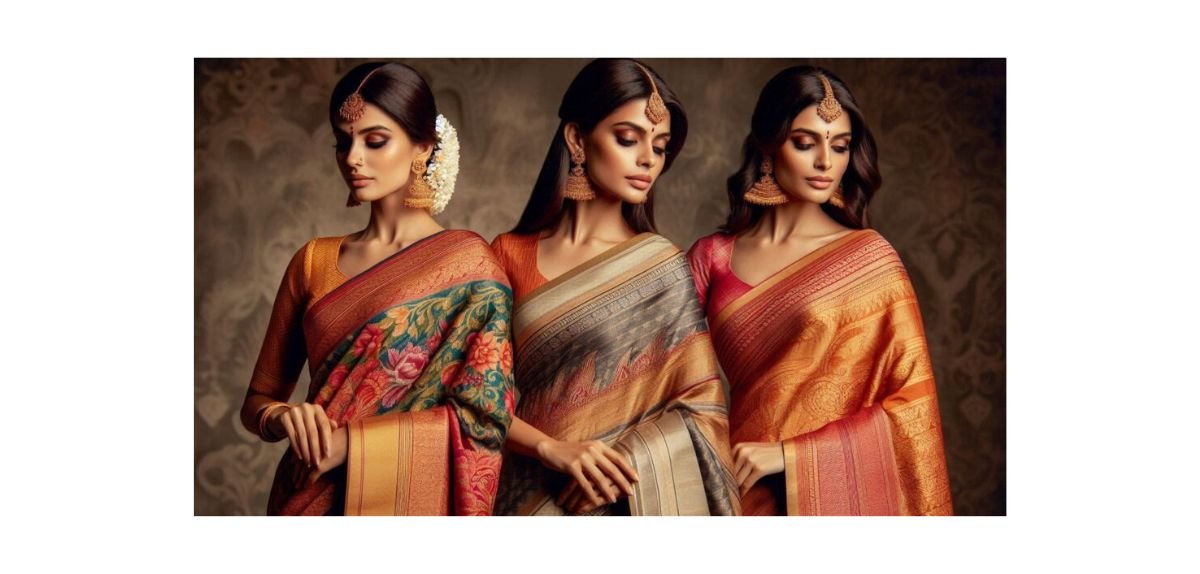
One of the most beautiful and classic attire in Indian culture, sarees are characterized not only by their designs but also by the quality of their fabrics. The drape, comfort, and practicality of a saree for various functions can all be influenced by the fabric selection. Here we will talk about the several types of saree fabric that help you choose the ideal one for each occasion.
11 Different Types of Saree Fabric
Cotton Sarees
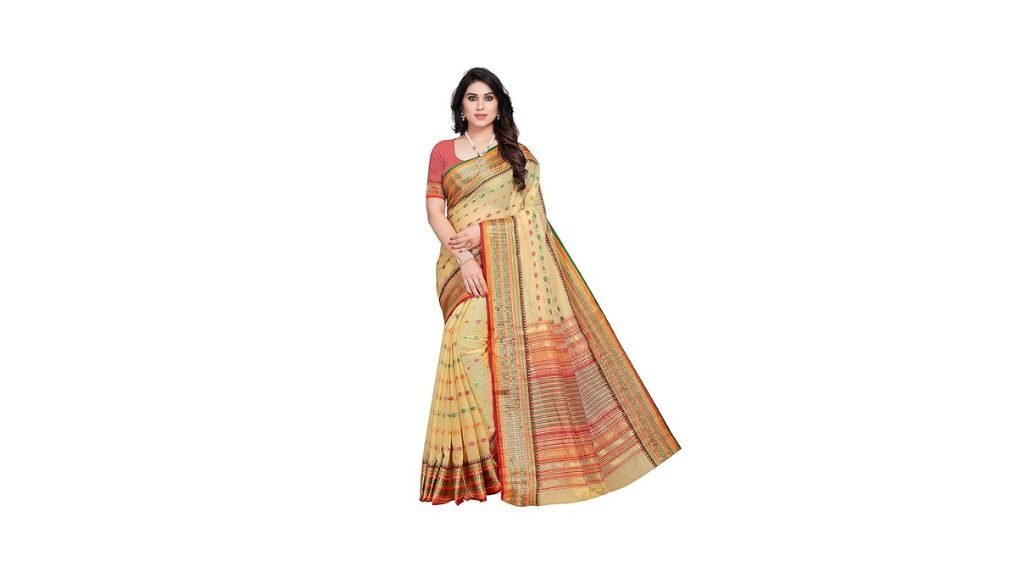
Sarees are made of pure, non-stretchy cotton. One of the most common fabric types that women prefer to drape in the hot and humid months is cotton. One of the most eye-catching features of cotton fabric is its open spaces, and the East Indian states specialize in developing the best cotton printed and artwork sarees. This is the best explanation of all. The saree style has a classical look and allows you to match it with unique-design blouses.
Suitable for: Everyday use, business attire, and informal gatherings. Cotton sarees are ideal for daily wear because they are comfortable and durable.
Care Instructions: Cotton sarees should be gently washed with mild detergents and ideally sun-dried to keep their color and texture the same.
Chiffon Sarees
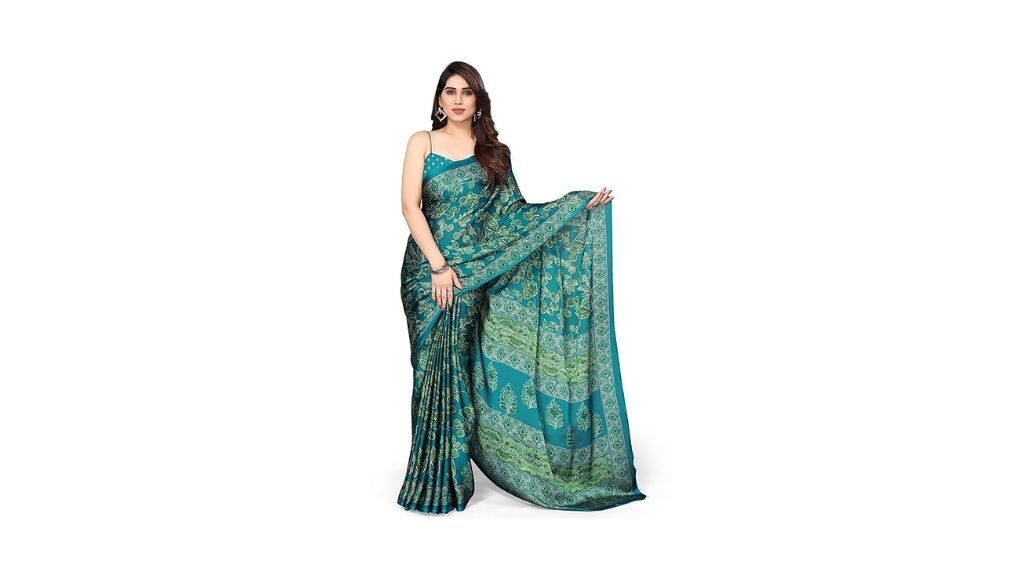
The French term “chiffon” literally refers to “cloth.” Lightweight plain-woven chiffon has a mesh-like weave that makes it appear transparent. The main materials used to make it are cotton, silk, or synthetic materials like polyester, rayon, and nylon. Chiffon drapes smoothly as it’s lightweight, slightly sheer, and slightly stretchy.
Suitable for: Formal occasions, evening gatherings, and casual attire. Sarees made of chiffon are ideal for making a graceful, and flowing vibe.
Care Instructions: To prevent damage to the fabric, hand wash chiffon sarees instead of wringing them out.
Silk Sarees
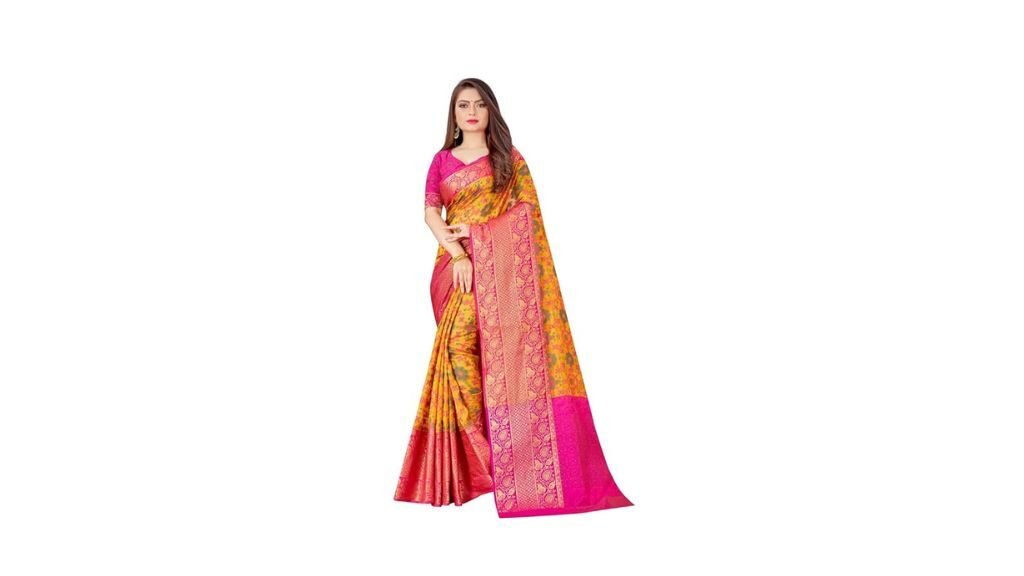
There are many different types of Pure Silk; the most exquisite classic South Indian silk sarees include Konrad, Mysore, Uppada, Kanjeevaram Silk, Chettinad, Gadwal, and Pochampally. Among the varieties of silk are Paithani, Raw, Maheshwari, Raigarh Kosa, Ghicha, Kashmiri, Dharmavaram, Kota, and Tussar. Because of their beauty and the value of pure silk, these sarees are frequently passed down through the generations as collector’s items. Silk is renowned for its brilliant colors, rich feel, and shine. It is very durable and drapes wonderfully.
Suitable for: Formal gatherings, festivals, and weddings. In India, silk sarees are a common part of bridal looks.
Care Instruction: To maintain the richness and exquisite needlework of silk sarees, always dry clean them.
Linen Sarees
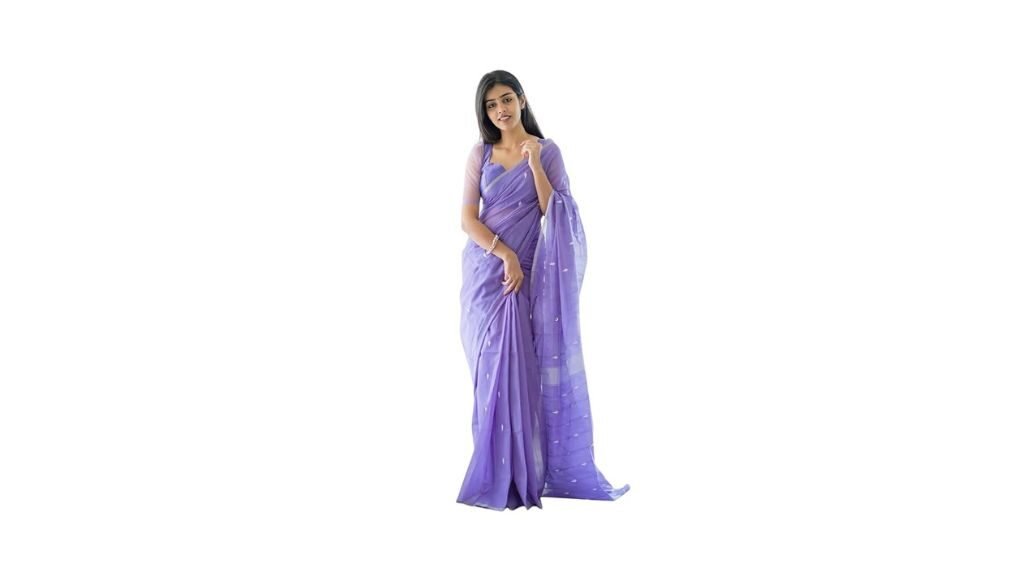
One of the most treasured textiles in history is linen, which gives exceptional comfort and durability. Because linen sarees keep women comfortable in hot and humid areas, they are often worn at informal and summer gatherings. Lightweight and absorbing, linen has a smooth feel and a built-in shine.
Suitable for: Semi-formal gatherings, office, and daily wear. Sarees made of linen are fashionable and comfy, ideal for warm weather.
Care Instructions: To keep their shape and avoid shrinking, linen sarees should be machine or hand-washed with cool water.
Organza Sarees

The pinnacle of beauty and splendor is the organza sarees. The fabric is usually made of silk or synthetic fibers, which produces a rich and beautiful fabric. This fabric has an elegant, attractive quality that comes through no matter what color scheme the pastel organza saree is or how vibrant and stunning the design is. While the fabric’s durability maintains the saree’s design and shape, its lightweight quality makes it comfy to wear. Organza is a sheer, delicate fabric with a rigid structure that works well for heavy embroidered sarees.
Suitable for: Ceremonies, bridal attire, and luxury events. Because of their elegant style and structured designs, organza sarees are commonly worn.
Care Instructions: To prevent snags and tears, organza should be dry-washed and maintained carefully.
Crepe Sarees
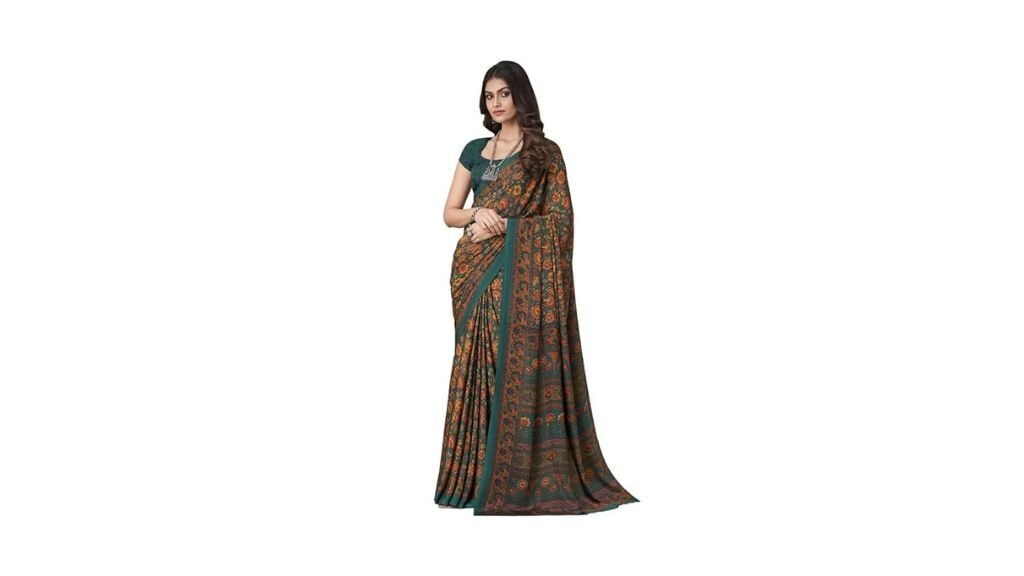
Because of their unique texture and drape, crepe sarees are highly versatile and elegant sarees that elevate any saree attire to a classy level. Crepe sarees are exceptionally comfortable to wear because of their light, flowing design, which promotes ease of movement. Crepe is one of the best materials for sarees, and what sets them apart is how well they combine traditional and modern design elements.
Suitable for: Dinner dates, workplace apparel, and formal occasions. Crepe sarees look beautiful in both modern and classic styles.
Care Instructions: Use a moderate detergent and cold water to wash crepe sarees. It is best to let them air dry.
Net Sarees
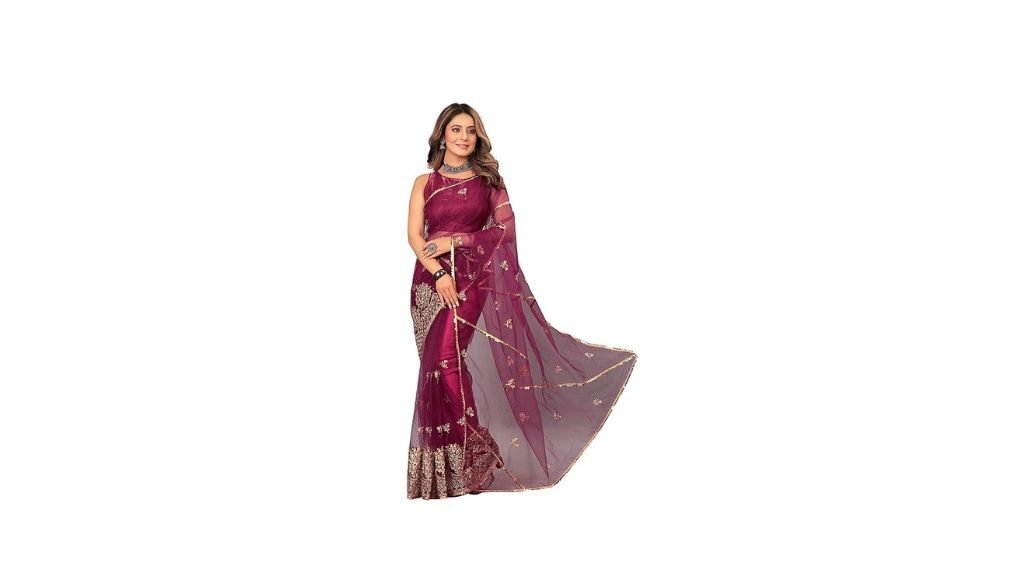
Net is an open-weave fabric with intricate embroidery design on it. The sleek, contemporary style of net sarees has made them popular to look gorgeous.
Suitable for: Festive occasions, parties, and wedding receptions.
Care Instructions: To prevent ruining the fabric and embroidery, handle net sarees carefully, particularly when washing and drying.
Georgette Sarees
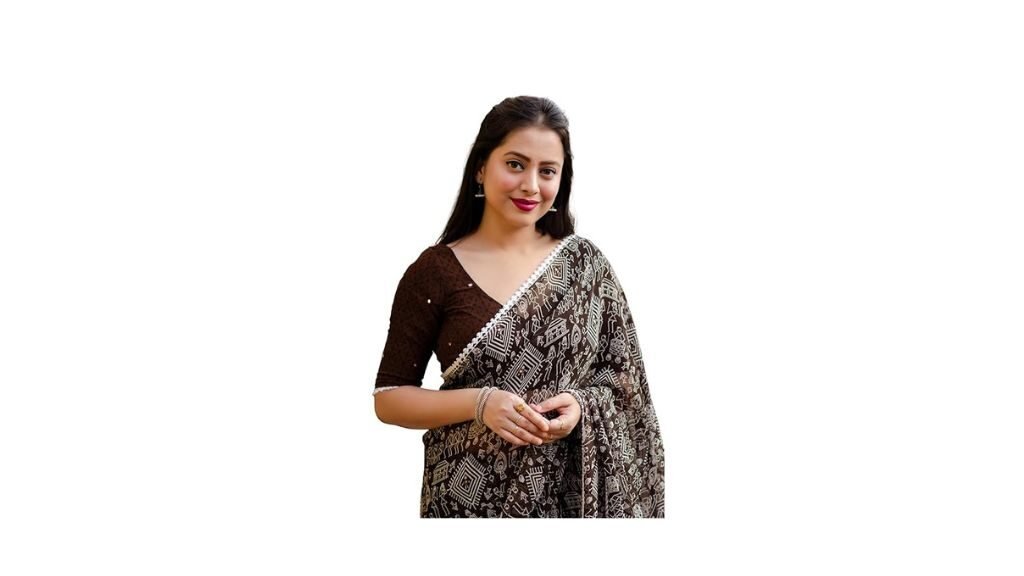
There are a variety of saree fabrics, the exquisite georgette fabric saree is a favorite among all women. Georgette fabric is considered one of the greatest forms of saree material because it gives a feeling of sophistication and grace to traditional Indian attire. The flowing drape and delicate texture of Georgette, a sheer, lightweight fabric, have a captivating quality.
Suitable for: Everyday wear, parties, and informal gatherings. Because of their versatility, georgette sarees can be worn for both formal and casual occasions.
Care Instructions: Georgette sarees need to be carefully cleaned and kept out of direct sunlight.
Velvet Sarees

Velvet has a rich, deep color scheme, and a velvety texture, and is heavy and luxuriant. Velvet sarees give any occasion a touch of royal feel.
Suitable for: Classy evening parties and winter weddings.
Care Instructions: To prevent smashing the delicate pile, velvet should be dry cleaned and stored hanging.
Jute Sarees
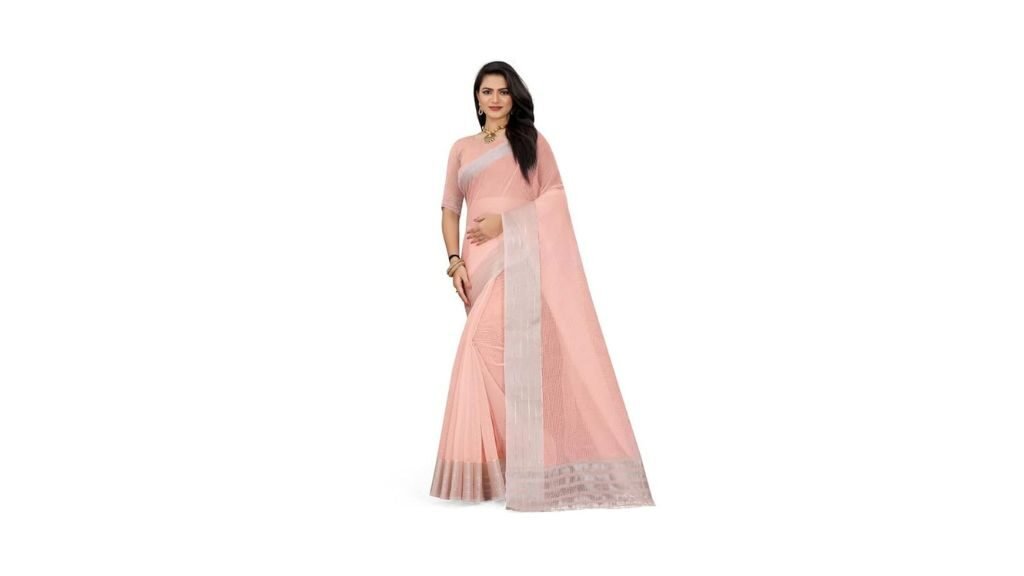
Jute textiles offer a rustic charm and are robust, eco-friendly, and have a unique texture. Sarees made of jute are becoming more and more in style as an eco-friendly option.
Suitable for: Eco-friendly events and informal get-togethers.
Care Instructions: For maintaining its texture and shape, jute sarees have to be washed gently and placed flat to dry.
Khadi Sarees

Khadi sarees are an important part of India’s history and are a popular textile in the nation’s cultural heritage. The unique texture of khadi sarees combines both sophistication and simplicity while also giving them a sense of classical beauty.
Suitable for: Everyday wear, parties, and informal gatherings. Because of their versatility, khadi sarees can be worn for both formal and casual occasions.
Care Instructions: Khadi sarees need to be carefully cleaned and protected from direct sunlight.
FAQs on Types of Saree Fabrics
How can you recognize the good quality of a saree?
To the touch, pure silk should feel soft, silky, and somewhat cool. However, synthetic silks might feel overly smooth or slick. Check the luster of the saree by holding it in the sunlight.
What is a soft saree’s fabric?
For people who don’t often wear sarees, synthetic materials like crepe, rayon, and chiffon are perfect. They are easy to wear because of their lightweight yet soft and silky texture.
What type of saree material is best?
The best saree materials include a variety of types such as cotton, georgette, silk, and many more. It is all up to you, and it differs from person to person.
How do I choose fabric for a saree by body type?
Choose sarees made of high-quality fabric that highlight your lower body if your figure looks triangle-shaped, with large shoulders, a large bust, and small hips.
Conclusion
Your ability to pick the perfect saree for any event can be significantly enhanced by being aware of the various varieties of saree textiles. Every fabric has different qualities and styles, from the casual elegance of cotton to the rich draperies of silk. Make wise choices by Coupontalk guide on types of saree fabrics and give your sarees the right care to maintain their beauty for many years to come.



